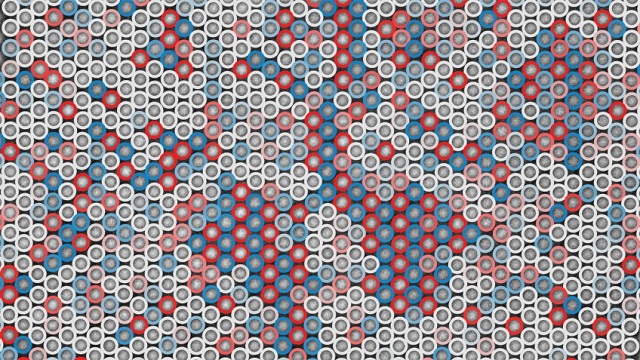 Researchers from North Carolina State University (NC State) have found out that electron spin brings some sort of order to high entropy alloys. They have determined that an unknown degree of order, which was not known before, was brought about by electron spin to nickel iron chromium cobalt (NiFeCrCo) high entropy alloy. This spin could contribute to the remarkable properties demonstrated by this alloy.
Researchers from North Carolina State University (NC State) have found out that electron spin brings some sort of order to high entropy alloys. They have determined that an unknown degree of order, which was not known before, was brought about by electron spin to nickel iron chromium cobalt (NiFeCrCo) high entropy alloy. This spin could contribute to the remarkable properties demonstrated by this alloy.
Researchers from North Carolina State University (NC State) have found out that electron spin brings a degree of order to high entropy alloy nickel iron chromium cobalt (NiFeCrCo). This spin could contribute to the remarkable properties demonstrated by this alloy.
High entropy alloys have garnered a lot of attention over the past 10 years because they have remarkable properties,
Doug Irving, an associate professor of materials science
Materials that are composed of four or more metals in nearly equal amounts are considered as high entropy alloys.
For example, NiFeCrCo-based high entropy alloys have a good combination of hardness, tensile strength, ductility, and fracture resistance at extremely low temperatures.
If you look at NiFeCrCo, it has a fixed structure. Think of orderly rows of boxes. But which atoms fill which spaces is seemingly random – it seems impossible to predict which element might be in any given box. That impression of chaos is why they’re called high entropy alloys.
But now we have determined that there is some order in the composition of this alloy.
Doug Irving, an associate professor of materials science
The research team discovered that key roles were played by both spin and chromium.
All electrons possess spin, and electrons are present in all atoms that make up materials. In ferromagnetic materials such as iron, cobalt and nickel, their electrons have a tendency to align in a manner such that their spin gets oriented in the same direction. However, in antiferromagnetic materials such as chromium, the electrons tend to align in a manner such that their spin is oriented in the opposite direction of their neighbors.
In the NiFeCrCo high entropy alloy, when chromium is surrounded by iron, cobalt or nickel, it can align its spin opposite to its neighbors. The electrons of chromium can spin down when the electrons of other materials spin up. However, when two chromium atoms are neighbors – when they are adjacent to one another – they would not be able to align their spins in a manner that is different from their other neighbors.
In the NiFeCrCo structure, the spin properties of chromium compel its atoms to be apart as far as possible. Further, this alloy has a large concentration of chromium atoms, which leads to creation of nanoscale domains of order and overall “chaos” in the high entropy alloy.
“Showing that this material has order at the nanoscale will likely lead to new work on how to expand these ordered domains, and potentially manipulate the material’s mechanical properties,” Irving says.
In order to perform atomic scale study of the happenings in NiFeCrCo, the NC State researchers used revolving scanning transmission electron microscopy, magnetic property measurements, and advanced electronic structure calculations.
It’s a powerful example of what can be learned through combining state of the art microscopy techniques with predictions from advanced computational approaches,
James LeBeau, an assistant professor of materials science and engineering at NC State
This study has been published in Applied Physics Letters journal, as a paper titled “Spin-driven Ordering of Cr in the Equiatomic High Entropy Alloy NiFeCrCo.”
Changning Niu, a Ph.D. student at NC State, is the lead author of the study. Adedapo Oni, Carl Koch, Alexander Zaddach, and Xiahan Sang, all of NC State, and James Hurt III of Furman University are co-authors of this study.
The National Science Foundation and the Air Force Office of Scientific Research have provided support through grants for this study.
References